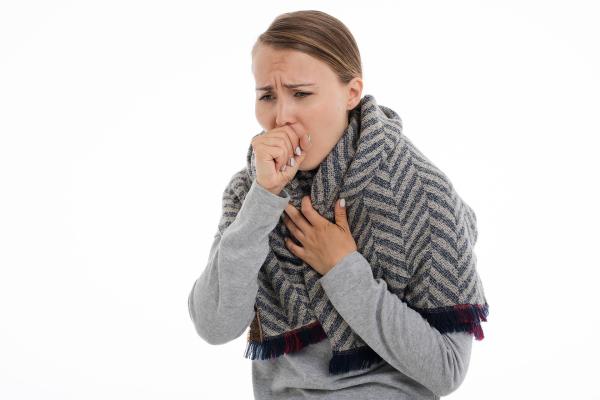Let’s begin with three basic facts.
- COVID-19 and its variants are airborne viruses that spread through person-to-person contact. Once the infection is established in our nose, airways, and lungs, our breath propels it into the air around us. It may go further and faster if we sneeze or cough, less so if we speak in a normal or hushed tone, but our breath is literally the air beneath COVID-19’s wings, initially.
- Another basic fact about COVID-19 infections is that many are asymptomatic; the severity of the disease seems to be, hopefully, waning. In those cases where symptoms are present, they are generally non-specific, fever, cough, nausea, diarrhea – due to a range of viral and microbial diseases. The tell-tale COVID-19 symptom appears to be loss of taste or sense of smell, but in reality, many individuals with an upper respiratory infection will have those symptoms.
- Finally, many diseases have a presentation, symptoms that appear first or more frequently – it reflects the underlying abnormal process and the body’s attempt at correction and repair. For COVID-19, the presentation includes all or some of those non-specific symptoms. A new paper hypothesizes that the order of those symptoms matters in the virus's ability to be transmitted to another host. Could that indeed be the case?
The Study
Long ago, before omicron and delta, there was COVID-19 alpha, COVID-19 original. Studies by the researchers at that time, using the self-reported symptoms of fever, cough, nausea, and diarrhea in a dataset from China, indicated that fever was the most frequent first symptom. This is a good reason to have used temperature screening to identify individuals that might have COVID and makes all of those scans of your forehead or wrist at least rational, if not less annoying.
They applied a similar analysis to self-reported symptoms in patients in the US, but the predominant strain was delta, not alpha. They found that delta presented initially with coughing.

Overall, they found that in China, individuals with COVID-19 original initially presented with fever 79% of the time, while in the US, with COVID-19 delta, cough led the way at 47% initially. The gastrointestinal symptoms of nausea, vomiting, and diarrhea also had a similar pattern. In China, more patients had nausea and vomiting, symptoms associated with the upper intestine than diarrhea; in the US, just the opposite, more likely to experience diarrhea, a lower intestine symptom.
Of course, the symptoms that a patient reports can also be affected by cultural issues – the Amish are quite stoic in my experience and rarely required or requested pain medicine after surgery. To consider this possibility, the researchers applied the same analysis to data from Hong Kong when COVID-19 original was dominant and in Brazil when delta was the driving force of infections. Once again, the pattern for the first two symptoms, fever and cough, remained; delta more frequently begins with a cough, COVID-19 original with fever. They also looked at Japan and could separate patient symptoms into periods when COVID-19 original or delta was predominant.
“Thus, before the D614G mutation [delta] became prominent in Japan, the order of symptoms matched China. However, after the D614G mutation became prominent in Japan, the order of symptoms matched the USA. These results support the notion that the D614G variant induces a different symptom order in symptomatic patients.” [emphasis added]
In additional analysis, the researchers found that the order of symptoms was consistent irrespective of region, weather/season, and comorbidities. Fever was the most common initial symptom for COVID-19 original; coughing was the most common for the delta variant. [1]
Implications?
Another basic fact about COVID-19 infections is that individuals are “transmitters” of the virus one or two days before they become symptomatic. COVID-19 is stealthy, spreading to your close contacts before you are aware you are infected. For many of us, a fever, unless it is really high and comes along with aches and pains (myalgia, if you prefer the medical term), is not a reason to stay home – after all, why waste a perfectly good “sick day” being ill?
Coughing likewise is non-specific, not a reason to necessarily curtail your social activities. But unlike fever, coughing gets those viral particles airborne over greater distances. And it is possible that coughing, which we know is related to upper airway infection, also puts a greater viral load into the air. The researchers raise an intriguing possibility. Could the enhanced “transmissibility” of delta be partly due to the ordering of symptoms? Can a cough before a fever make a difference?
The research was a mathematical analysis of actual patient self-reported data. It demonstrates an association between symptom order and two variants of COVID-19; it does not prove causality but raises a subtle distinction that may explain some of the increased transmissibility. It will be interesting to see what they find for omicron.
Following this “science” offers an alternative to the blanket requirement for masking. Maybe people with a cough, however slight, should wear a mask. We know that masks as a physical barrier reduce the amount and distance viral particles can travel; it should therefore reduce transmission. Of course, that would require us to be more mindful of what our bodies are telling us and socially responsible as a result.
[1] In a different, very cool approach, the researchers looked at Google searches during COVID-19 infections. The search term "fever" occurred more frequently in areas dominated by COVID-19 original, "cough" more frequently where delta was dominant.
Source: Modeling the onset of symptoms of COVID-19: Effects of SARS-CoV-2 variant PLOS Computational Biology DOI: 10.1371/journal.pcbi.1009629




